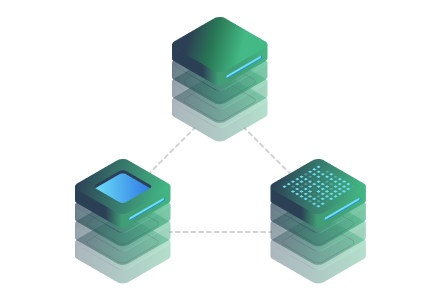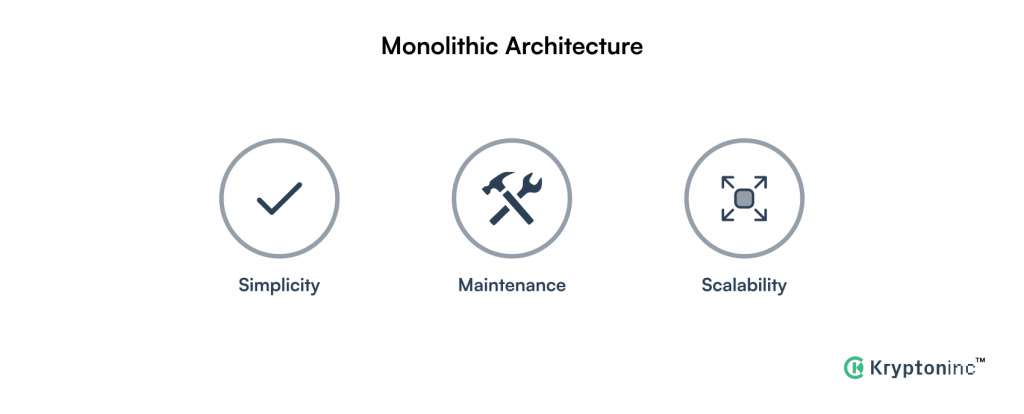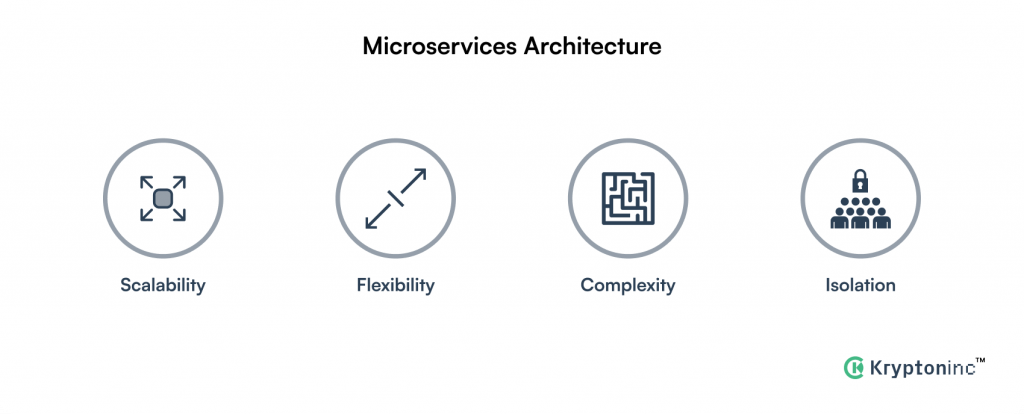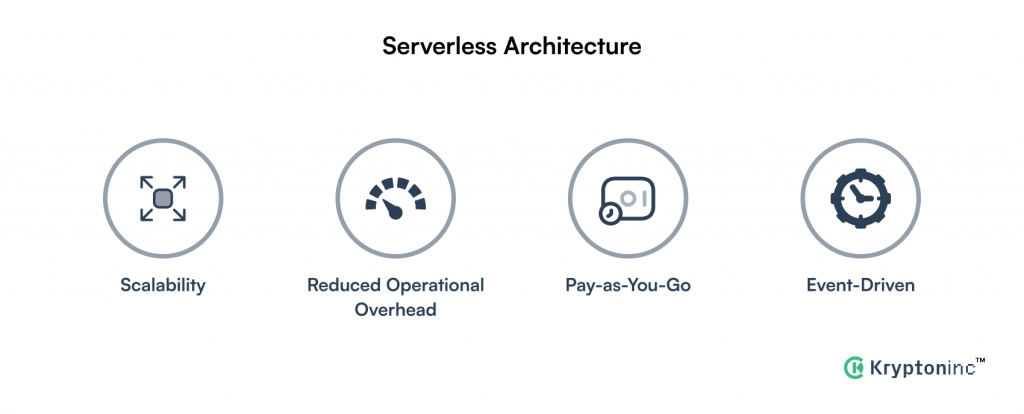Exploring Architectures – Monolithic, Microservices, and Serverless: Choosing the right approach for the project

The choice of software architecture is a critical decision in any development project. It can profoundly impact scalability, maintainability, and overall project success. In this article, we'll delve into three popular software architectures - Monolithic, Microservices, and Serverless - and guide you in choosing the right approach for your project. Additionally, we'll introduce you to how KryptonInc can be your trusted partner in implementing the chosen architecture and delivering successful projects.

Monolithic Architecture
Monolithic architecture is the traditional approach where all components of an application are tightly integrated into a single codebase and run as a single unit. Key characteristics of monolithic architecture include:
- Simplicity: Monoliths are relatively simple to develop and deploy since there's a single codebase to manage.
- Maintenance: Maintenance can become challenging as the codebase grows, making it harder to add new features or fix issues without affecting the entire application.
- Scalability: Scaling a monolith can be complex, as you often need to scale the entire application even if only specific components require more resources.
Use Case: Monolithic architecture is suitable for small to medium-sized projects with straightforward requirements where simplicity and speed of development are priorities.

Microservices Architecture
Microservices architecture breaks down an application into a collection of loosely coupled services, each responsible for specific functions. Key characteristics of microservices architecture include:
- Scalability: Microservices allow individual services to scale independently, making it easier to handle increased demand for specific features.
- Flexibility: Developers can choose the most appropriate technology stack for each microservice, enhancing flexibility.
- Complexity: Managing a microservices architecture can be complex, as it involves coordinating multiple services and handling communication between them.
- Isolation: A failure in one microservice should not bring down the entire application, improving fault tolerance.
Use Case: Microservices architecture is ideal for large and complex projects, especially those with a diverse tech stack and teams that require independence.

Serverless Architecture
Serverless architecture abstracts server management away from developers, allowing them to focus solely on writing code. It involves functions that are triggered by events and executed in stateless containers. Key characteristics of serverless architecture include:
- Scalability: Serverless platforms automatically scale resources based on demand, ensuring cost-effectiveness.
- Reduced Operational Overhead: Serverless eliminates server management, reducing operational overhead.
- Pay-as-You-Go: You only pay for the compute resources used during function execution, making it cost-efficient.
- Event-Driven: Serverless functions are triggered by events, such as HTTP requests, database changes, or timers.
Use Case: Serverless architecture is suitable for projects with variable workloads, where minimizing operational complexity and cost-efficiency are priorities.
Choosing the Right Architecture
Choosing the right architecture depends on several factors:
- Project Size: Consider the size and complexity of your project. Monolithic architectures are suitable for smaller projects, while microservices or serverless architectures are better for larger, more complex endeavors.
- Team Expertise: Assess your team's expertise with the chosen architecture. If your team is experienced with microservices, it may be the right choice.
- Budget: Consider your budget and operational costs. Serverless architectures can be cost-effective, but microservices might require more investment in infrastructure.
- Scalability Needs: Evaluate your scalability requirements. If you need fine-grained scalability, microservices or serverless can be advantageous.
- Project Goals: Align your architecture choice with your project's goals. For rapid development, a monolithic approach might be suitable. For maximum flexibility, consider microservices.
KryptonInc: Your Architecture Implementation Partner
Choosing the right architecture is a crucial step, and at KryptonInc, we're here to help you navigate this decision. Here's how we can assist you:
- Architecture Consultation: We provide expert guidance in selecting the most appropriate architecture for your project based on your goals and requirements.
- Implementation: Our experienced development team can implement the chosen architecture, ensuring a seamless and efficient transition.
- Maintenance and Optimization: We offer ongoing maintenance and optimization services to ensure your project runs smoothly and cost-effectively.
- Scalability Solutions: If your project requires scalability, we have the expertise to implement microservices or serverless solutions tailored to your needs.
Conclusion
Selecting the right software architecture is a pivotal decision that can significantly impact your project's success. Whether you opt for a monolithic, microservices, or serverless architecture, KryptonInc is your trusted partner in implementing and maintaining the chosen approach.
Ready to embark on your project with confidence? Contact KryptonInc today, and let's discuss how we can help you choose and implement the ideal architecture for your project.
At KryptonInc, we're committed to delivering successful projects by helping you choose and implement the right architecture. Contact us today to ensure your project's success with the architecture that best suits your needs!
